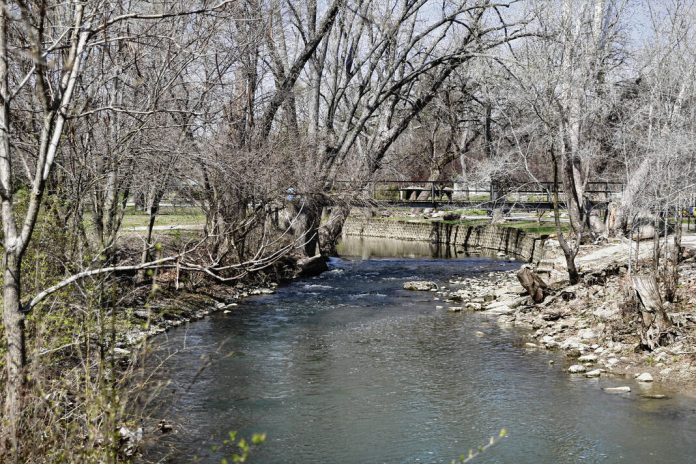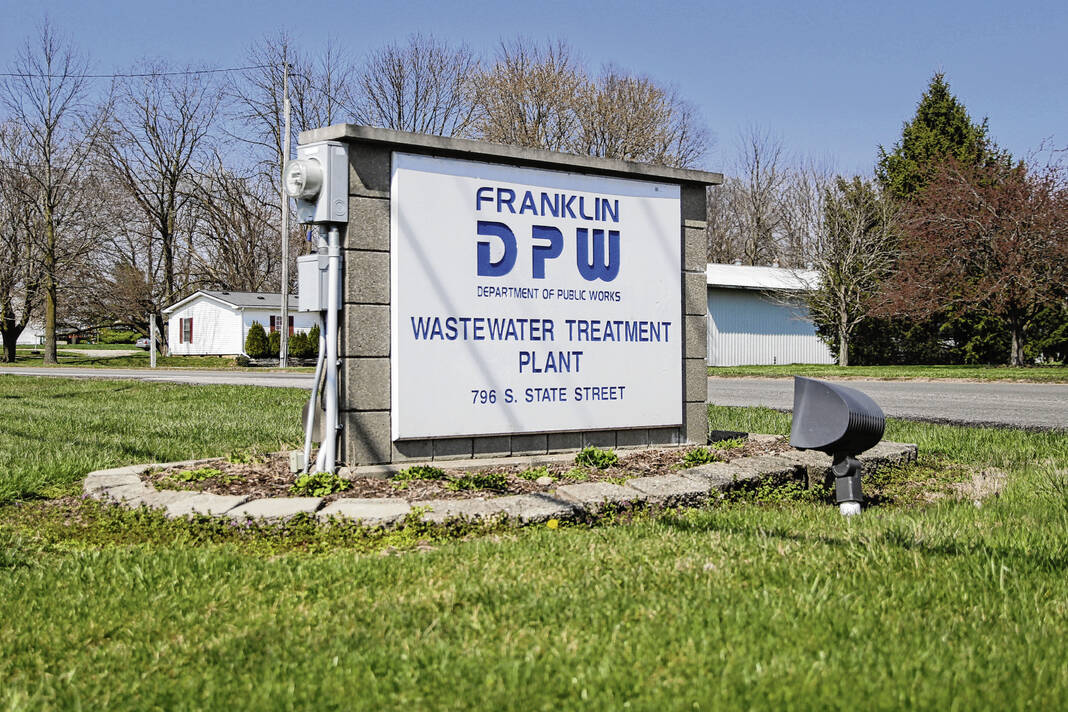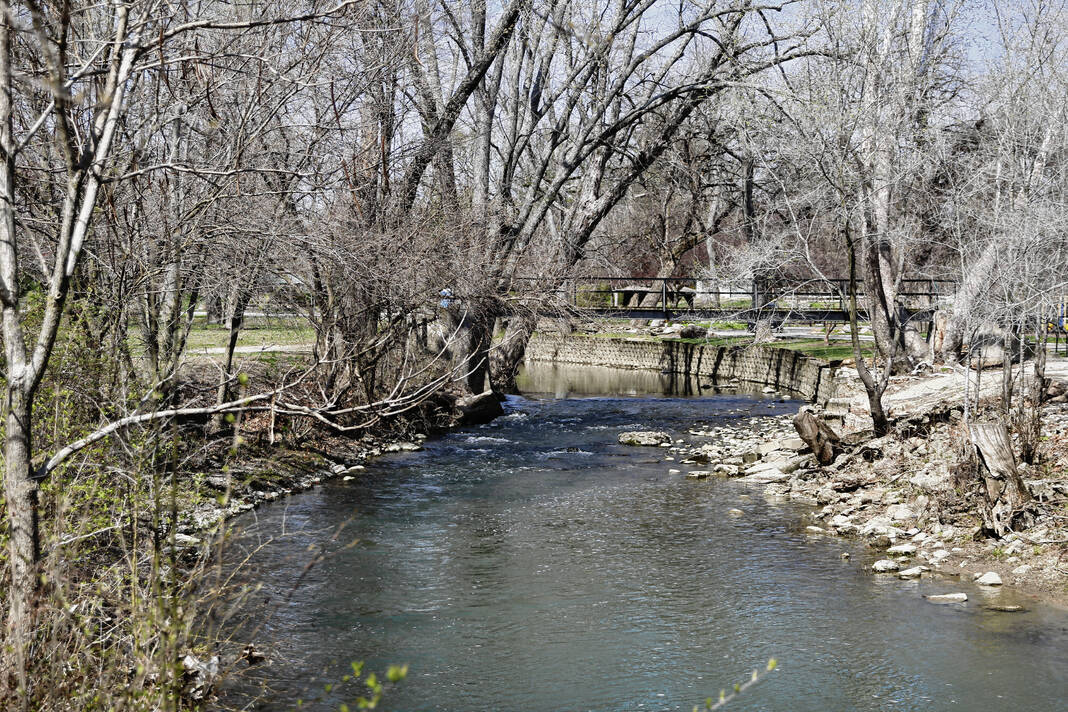The city of Franklin was fined $15,600 after 36,000 gallons of sewage sludge accidentally spilled from the wastewater facility and into Young’s Creek last summer.
City officials say the root cause of the spill was broken equipment at the city’s wastewater plant, which last saw a major update in the 1990s. Officials already knew the plant needed work, but the spill underscored the need to update the plant. Design work is now underway to both fix up the plant and expand capacity.
About the incident
On July 15, 2023, the Indiana Department of Environmental Management Emergency Response received a complaint that black water and dead fish were present in Young’s Creek near a resident’s home, approximately one mile downstream from the Franklin Wastewater Treatment Plant.
The cause of the accident was the rupture of a large gasket on one of the sludge pumps, which caused the tank to release the sludge. When the sludge level was lower, the pump overheated, and triggered an alarm at approximately 3 a.m. on July 15, documents show.
The spill was discovered Saturday morning when employees arrived at the plant, said Sally Brown, wastewater superintendent. The employees responded quickly to the incident, IDEM documents show.
Crews spent several days and any spare moment they had to assist with cleanup efforts using vacuum trucks and water hoses, Brown said.
The doors of the Sludge Control Room were forced open by the sludge and “literally ran out the front doors, down the sidewalk, to the street, across the street where it ponded on the grass before finding a surface ditch leading downgrade across the property,” an IDEM Emergency Response Incident Report said. The sludge moved into a nearby stormwater conveyance structure, traveling about 1,000 feet to Young’s Creek, documents show.
A “black smelly trail” continued under the fence, running onto a large grassy area where it ponded.
IDEM Emergency Response noted negative downstream impacts at the time including brown cloudy water with odor, sharply elevated ammonia levels and dead fish starting at the wastewater treatment plant and extending about two miles downstream to County Road 250 South. At the U.S. 31 bridge over Young’s Creek, IDEM noted “brown cloudy water with odor, sharply elevated ammonia, decreased DO [dissolved oxygen] but no dead fish.” Upstream, the water was clear and odor-free with no ammonia and live fish, the report said.
Some of the sludge was contained within stormwater retention areas, including a natural bermed area next to the creek. City employees immediately began clean-up efforts, constructing earthen berms in four sections to aid in stopping the sludge’s flow to the creek, according to IDEM.
IDEM’s emergency response was dispatched and arrived later that day to conduct field analysis. The analysis found elevated levels of ammonia and dissolved oxygen, documents show
The part of the sludge pump that broke causing the spill is recommended to be replaced every five years, but the piece was only a couple of years old, Brown said. Now there is a plan in place to replace the pieces before they may break, she said.
Correcting violations
During a follow-up inspection on Oct. 11, IDEM staff noted “inadequate maintenance and operation in the facility.” Specifically, a thick layer of sludge on top of clarifier surfaces, return activated sludge appeared “extremely dark in color with a very thick consistency,” recurring sludge loss from tanks with four documented incidents between July 17 and Oct. 11.
After the violations, the city submitted a compliance plan to IDEM, but the agency said “the responses did not adequately address the violations noted.”
The sewer department is working with engineers to develop the compliance plan and design plant improvements, city officials said.
After the spill, the remaining sludge was cleaned up and put back through the system, causing some of the elevated ammonia numbers cited in violation, Brown said. It wasn’t “good practice,” and officials now know they upset the system, she said.
“The wastewater plant is a biological system, like an animal and it has its persnickety, it can’t eat just anything,” Brown said. “… So we figured we did it to ourselves because it’s a biological system, just like when you get the flu and your stuff’s messed up, sometimes it’ll take you a few weeks to get back. Think of this on the million-gallon scale. This was really upset and it takes it a while to come back around. It doesn’t happen overnight.”
The facility hasn’t exceeded limitations since, nor had any more spills. Officials have also installed has since installed flood protection and flood alarms and are continuing to check the system daily, Brown said.
“We’re doing everything that we can, in the preventative maintenance department, with the sensors and checking it regularly,” Brown said. “…We can’t foresee some things, but we’re doing everything we possibly can to avoid it.”
While the city agreed to pay the civil penalties, they don’t necessarily agree with all of the findings of fact and believe they did remediate the issue, said Lynn Gray, city attorney.
However, they felt it made more sense to work IDEM and reach an agreement, she said.
Going forward
Mayor Steve Barnett said a spill of this scale hasn’t happened in a long time, but it does happen. Daily Journal reports show different incidents where wastewater discharge has ended up in the creek over the years.
Upgrading the wastewater plant has been on the Barnett’s radar for years. It is one of many buildings that he has had a goal to fix up including the Franklin Active Adult Center and the Main Street fire station, Barnett said.
“We were already aware that we needed to update the facility,” Barnett said. “When we do get done, it will be good for another 20 years.”
In February, the city’s Board of Works and Public Safety approved a $1.7 million engineering contract with Wessler Engineering to update and improve the facility. The building is now in the design phase and the engineering firm is currently evaluating the facility to determine how to best upgrade it. As the project moves forward it will go before the board works and the city council, Brown said.
The scope of the project includes increasing the designed average flow and peak hourly flow, replacing four raw sewage pumps and adding two new submersible low-flow pump stations. A new screening building and blower building will be added as well. The project is expected to cost around $40 million, Brown said.
“We’re excited to have some upgrades,” Brown said. “When things get old, we worry about them. Like when you go on a trip in your old car, even though you’ve taken good care of it, there’s always a greater chance it will break and when you buy that brand new car off the showroom, you don’t worry as much. We’re excited to have some upgrades so we don’t have to worry so much maybe.”
The design and engineering process is expected to be about 40 months, or about three and a quarter years, Brown said.
Editor Leeann Doerflein contributed to this story.









